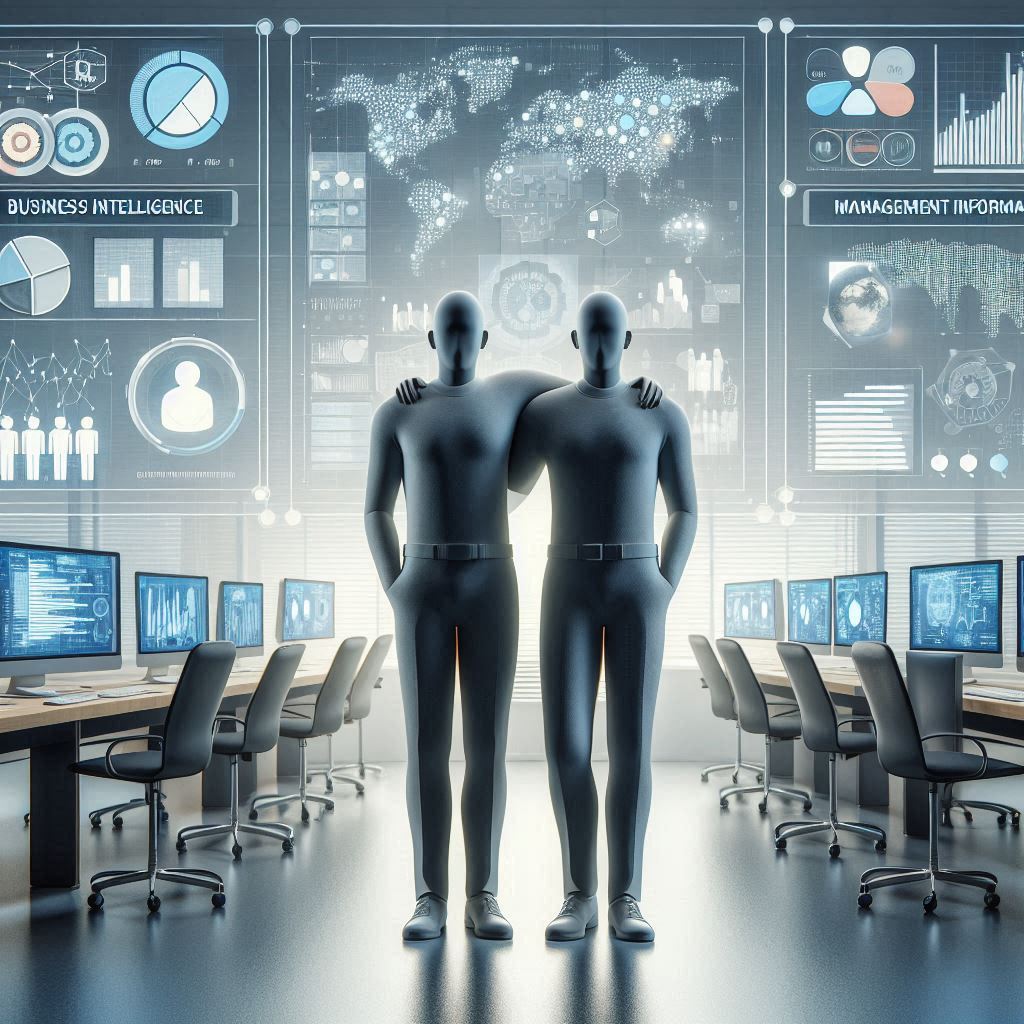
When it comes to navigating the data landscape, two terms often come up: Business Intelligence (BI) and Management Information (MI). Although they might appear similar, it’s our view that they play distinct roles in how businesses handle and interpret data. If you’ve ever wondered what sets them apart, you’re in the right place. Let’s explore the differences between these two essential concepts.
Defining Business Intelligence and Management Information
Business Intelligence (BI)
Business Intelligence refers to the modern methods and tools used to analyse data, transforming it into actionable insights. It’s all about leveraging technology to make informed decisions based on real-time or near real-time data (we have some thoughts on what constitutes “real time” – we’ll save that for another blog).
For instance, a retail company might use BI tools to track customer purchasing patterns in real-time, allowing them to adjust inventory and marketing strategies on the fly. This proactive approach helps business to stay ahead of trends and make more appropriately timed decisions.
Management Information (MI)
Management Information, traditionally involves the routine collection and analysis of all business related information to support decision-making. Now this might sound the same, but this typically includes generating reports from historical data to track and measure performance over time in a manner that is more traditional, and is often based upon older technologies and methodology frameworks.
Consider a manufacturing company that uses MI to produce monthly reports on production efficiency. These reports help managers understand how well their processes are performing and identify areas for improvement based on past performance.
Key Differences Between Business Intelligence and Management Information
So we’ve defined both terms, and they sound the same right? Well, yes and no…
Focus and Approach
The primary difference between the two lies in their focus and approach. BI is forward-looking and proactive. It’s about discovering new insights and making predictions to guide future actions. MI, conversely, is usually retrospective and reactive. It centres on monitoring and reporting historical data to understand what has happened and why.
For example, a restaurant chain using BI might analyse current social media trends to predict customer preferences and adjust their menu accordingly. Meanwhile, the same chain might use MI to review last quarter’s sales data to understand which dishes were most popular.
Tools and Technologies
The tools and technologies used in BI and MI reflect their differing approaches. BI utilises advanced tools like Power BI, Tableau, and Qlik to analyse data in real-time. These tools offer interactive dashboards, enabling users to explore data dynamically.
Imagine a financial services firm using Tableau to visualise real-time stock market data, helping traders make split-second decisions. In contrast, MI relies on more traditional tools such as Excel and SQL-based reports. These tools are excellent for generating structured, consistent reports from internal systems.
For example, a local council might use Excel to compile and present monthly budget reports, ensuring all departments stay within their financial limits.
Data Handling
Another critical difference is how BI and MI handle data. BI is adept at managing large volumes of data from various sources, integrating them for comprehensive analysis. This capability is crucial for businesses dealing with big data, such as an e-commerce platform analysing user behaviour across multiple channels to personalise marketing efforts.
MI, however, typically deals with structured data from internal systems, focusing on consistency and accuracy. For instance, a hospital might use MI to generate daily reports on patient admissions and discharges, ensuring all records are up-to-date and accurate.
Historical MI vs. Modern BI
The transition from traditional MI to modern BI has been driven by advancements in technology and the growing need for real-time data.
Historical Management Information
In the past, data collection for MI was often manual and periodic, resulting in static reports that provided a historical view. For example, a retail store might have relied on weekly sales reports to understand performance.
Modern Business Intelligence
Today, BI has revolutionised this process. Data collection is now automated and continuous, capable of handling large volumes of data. BI tools provide interactive dashboards that update in real-time, offering predictive analytics and machine learning capabilities to forecast future trends.
For example, a logistics company might use BI to monitor fleet performance in real-time, predicting maintenance needs and optimising routes for efficiency.
Conclusion
Understanding the distinctions between Business Intelligence and Management Information is crucial in today’s data-driven world. While MI has laid the groundwork for data-driven decision-making by providing valuable historical insights, BI takes it further by offering real-time, actionable intelligence. By combining the strengths of both, businesses can not only track their performance but also anticipate and shape their future.
Whether you’re new to the data game or a seasoned veteran, grasping these concepts will empower you to make more informed, strategic decisions. So, the next time someone asks you about the difference between BI and MI, you’ll be ready to enlighten them!
![A thoughtful man surrounded by mathematical imagery [AI Generated]](https://datafirstconsultancy.co.uk/wp-content/uploads/2024/07/Designer-11-360x240.jpeg)
![View of a skyscraper from the ground [Stock image]](https://datafirstconsultancy.co.uk/wp-content/uploads/2024/07/image2-edited-360x240.jpg)